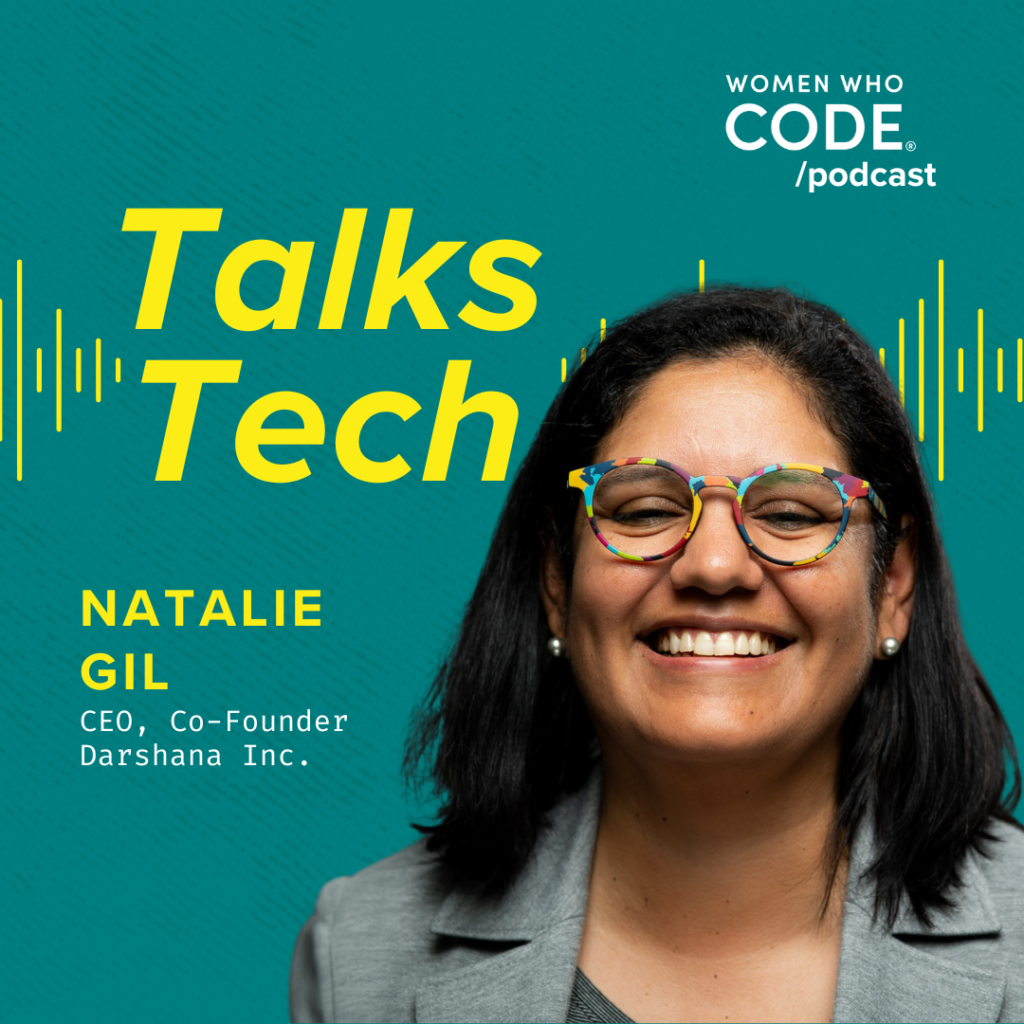Talks Tech #55 – Natalie Gil – Generative AI and Its Applications
Written by Natalie Gil

iTunes – Spotify – Google – Video – More Episodes
Natalie Gil, CEO and Co-Founder at Darshana Inc., shares her talk, “Generative AI and Its Applications.” She discusses what an amazing time it is to build in generative AI, the ability to retrain older models, and the future of work with AI, as well as the role of bias in data models and the importance of combatting it at every level.
We have a lot of resources and tools to do new text at the tip of our hands. We are generating new things, videos, images, and many things. Because this is hype, we see a lot of things. A long time ago, we had researchers who got much of what they wanted to do done with machines, particularly math. Math is complex, but we can solve math problems. But machines can be better, faster, and more efficient in resolving those problems. That’s why it’s artificial intelligence, our intelligence, but in an artificial way.
The idea was to start cracking those math problems. From the beginning, Alan Turing, Newell, and Simon put together some programs to do that. All these years later, with AI, we have more people coding and doing algorithms that train all these machines. We have more powerful machines. Today, we have a lot more data. Data is a key for background, context, and information to get those machines to improve their learning. That is what we call machine learning.
Machine learning is a subset of artificial intelligence where machines learn from scenarios and general data. Then, we have deep learning, which is a multilayer neural network. They perform all the more complex tasks. We are not just resolving math problems; we are now talking with different accents, making sounds, and engaging in other behaviors. Then, we have generative AI. Models are complex combinations of code data. All these models can give us some answers, context, and solutions.
That’s an important part of generative AI. Chatting with chatbots and asking for chats to generate images and videos are what we’ve seen lately. Data storage and processing got cheaper. Now, we have many options for storing and processing, especially in the cloud. We also have good options to be accessed for computing power on the cloud. So there’s a combination of things that wouldn’t be possible if we didn’t have all these advancements today to be more accessible to everybody.
Large language models take a lot of effort, money, and minds to train. Now, we can refine those models. We can retrain them. We can retrain them with fewer resources and less data. Large language models and generative AI can process many documents and contexts and help get better answers. This could be for an agent or a chatbot. It is not about eliminating people. It’s about empowering them to give better solutions, tools, and resources to do their work better. We also need to be ready to help everybody to understand that. As builders, we must remember that we are always impacting people. We must consider equality for everybody, equity too.
Having everybody impacted in the same way, or to be fair, we are not reinforcing biases, for instance. We must have inclusion. We have different accents because we come from different backgrounds. It’s important we, as builders, take care of that too. Every time I use one of these prompts, every time I use one of these chatbots, every time I use one of these requests, the machines keep learning. This is what it is made for. Every interaction I have keeps learning. This is good because it gets me more data and personal things, but it also gets better things for my population. But if I have a limited amount of data from different people from different backgrounds, there will be bias. Responsible AI also means we must know that regulation is a work in progress for AI and data, privacy, and other things. While building, we need to think holistically about what’s the best to implement today and what’s the best to keep as a work in progress. Generative AI needs more computing power to execute because you’re generating new things. There needs to be a sustainability problem. We must know what we are doing and use the right tools to provide value.
Last but not least, ethics. Since this will be completely automated, we need the right tools to raise red flags when doing something that might impact people. There’s a lot of very strong and committed research to help implement those things best. This is related to what we will call the machines to decide and the regulation. This is an amazing time to build, regardless of your role, whether you are a technical person in your area, in other roles building or making decisions, or being a consumer of this. Companies realize that they can enhance AI and generative AI on their tools to impact many users positively.
***************
Episode: www.womenwhocode.com/blog/talks-tech-55-natalie-gil-generative-ai-and-its-applications/
Video: https://youtu.be/-TcoMs_lT2g
Guest: Natalie Gil, CEO and Co-Founder at Darshana Inc.
Twitter: https://twitter.com/ratalie
Instagram: www.instagram.com/ratalieg
LinkedIn: https://www.linkedin.com/in/nataliegil/
Producer: JL Lewitin, Senior Producer, Women Who Code
